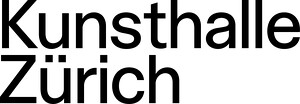DYOR
October 8, 2022–January 15, 2023
Limmatstrasse 270
CH-8005 Zürich
Switzerland
Kunsthalle Zürich presents two exhibitions that sound out the potential—positive and negative—of new and familiar media technologies.
Maximum Security Society: Julia Scher has traced the gradual emergence of a “maximum security society” (Gary T. Marx) since the 1980s. Her first institutional survey brings together a selection of works from the last 30 years: multimedia installations, video works, sculptures and print and internet projects. Scher draws on and samples this array of media to make explicit how technologies such as video surveillance, image recognition and automated database queries have become entirely mundane and structure our everyday reality. By mimicking familiar surveillance scenarios, Scher’s works evoke guarantees of security and comfort. The installation Predictive Engineering (1993-present), a new production for the Kunsthalle Zürich, plays with impressions that someone or thing might be checking over visitors—and what for? The mix of real and staged video footage leaves it unclear what form of protection (or threat) one should anticipate. Maximum Security Society also brings together the three beds Mama Bed, Papa Bed and Baby Bed (all 2003), which, equipped with cameras and monitors, make it evident how observation and communication (now “sharing”) has permeated into the most intimate corners of our lives. The constellation of Mama/Papa/Baby also refers to another form of surveillance, that of the nuclear family and the normative constructions that are, we know, particularly evident in intimacy and sexuality—or violently dominate there.
Scher is known for numerous surveillance installations that address psycho-social dynamics and perversions. The formal, sculptural quality of her work is often overlooked, however. It is precisely this that the exhibition Maximum Security Society at Kunsthalle Zürich also aims to highlight, whether in works such as Girl Dog Hybrid (2005), Hidden Camera (Architectural Vagina) (1991-2018) or Surveillance Area (1994).
DYOR: Little more than two years ago, a new art world appeared. Ignoring the art establishment, but dripping with money, it generated a lot of interest. The new art world was based on a new technology (blockchain), had its own distribution system (Web3), unregulated aesthetic concepts (evident through NFTs), digital currencies (crypto currencies), its own spaces for discussion, critique and promotion (Discord channels and Twitter) and new forms of participation. The reactions to it have been fierce, ranging from unbridled enthusiasm to categorical rejection, from exaggerated hopes to dark doomsday fantasies, from fascination with overnight wealth to criticism of energy consumption.
Nevertheless, in the last few months the appeal of this movement has become clearer. Blockchain is here to stay, it seems it will be significant for the music industry. NFTs might not catch on, though the technology allows novel forms of participation. The metaverse doesn’t really work yet and will be the next bubble, but DAOs are the future—for a start. This is an extremely vital, young, dynamic, contradictory, fascinating, problematic, creative, critical and critiqued field that many people want to know more about. For this reason, Kunsthalle Zürich has decided to produce one of the first ever institutional exhibitions on art in the context of blockchain and NFTs.
DYOR (do your own research) is a dictum of the crypto scene. The principle is that you should do your own investigation rather than believing all that you read. Curated by Nina Roehrs, with more than 50 artists involved, DYOR focusses on artists, projects and platforms that have had a significant influence on how the crypto art scene has developed and is today.


